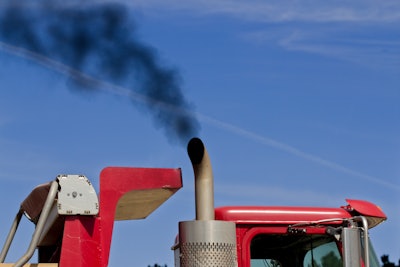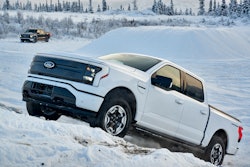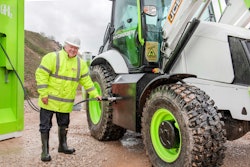
Editor’s Note: This opinion piece by Tom Jackson is Part Seven of an eight-part series on the evolution of construction equipment and the diesel fuel alternatives manufacturers are introducing, including hybrid machines, electric and battery-powered equipment, and hydrogen combustion and hydrogen fuel cell technology. You can read Part One in the series by clicking here. Part Two. Part Three. Part Four ,Part 5 and Part 6.
Anyone who has been around heavy equipment in the last 15 years remembers the disruption and uncertainty caused by the forced march to Tier 4 Final diesel emissions requirements.
Despite billions spent on research and development, many OEMs had to pay fines for missing cutoff dates. Some engines failed. One company declared bankruptcy. Diesel lube oil companies changed formulations four times to meet the increasingly harsh demands of the new engines. It was the right thing to do, but because of the regulatory timeline, it was rushed and created massive problems for contractors and OEMs alike.
The push is on now for low-carbon or net-zero carbon equipment as we have documented in this series of articles. And while there are no regulatory requirements for this technology right now, most industry observers think a “Tier 5” scenario is likely in the future.
Truth and consequences
The OEMs have already proven they can make near-zero CO2 machines. But the process of manufacturing them, the batteries they need, and providing the electricity to charge the batteries are not without their own environmental consequences.
For automobiles, at least, the newsletter TechCrunch says the path to an all-electric future is anything but certain:
“A growing body of research points to the likelihood that widespread replacement of conventional cars with EVs would likely have a relatively small impact on global emissions. And it’s even possible that the outcome would increase emissions.”
And even as some are questioning the sustainability of electrified construction and transportation systems, there are others who ask just how much global warming can be tolerated – the New York Times no less:
“While 5 degrees of warming once seemed possible, scientists now estimate that the Earth is on track to warm by 2 to 3 degrees. That difference might not seem huge, but it translates to fewer record-breaking floods, storms, droughts and heat waves and potentially thousands or millions of lives saved in the coming decades.”
Facts, not emotion
Given these reasonable questions, before we dismantle a century of energy development our government, engineers and scientists must decide three things regarding the technology used to get to net zero:
- When all environmental inputs are calculated, is it environmentally better than what it replaces?
- In aggregate, what is the right balance between economic and industrial disruption and environmental gain?
- What regulations and incentives can we create that will best achieve these ends?
The heavy equipment OEMs have come up with some amazing solutions as we have documented in this series of articles and as you will see in the trade shows in the coming years. But if these machines are ever to move from the tradeshow floor to the jobsites in significant numbers, the industry will require regulations and policies that make sense, policies that encourage greener technology without bankrupting OEMs, contractors or end users.
Solutions from the past
Surprisingly, when you look back at it, there were elements of the EPA’s Tier 4 Final rules that could offer a positive model for the future. In the old emissions schemes, OEMs were given credits if their engines could meet air quality standards ahead of schedule.
The same thinking should apply to future greenhouse gas regulations. Diesel-electric hybrids are here now and should be credited now. Hydrogen-combustion engines could be quickly adopted with little cost or impact. And hydrogen fuel cell technology, although expensive and challenging for some types of machines, is starting to enter the field in static applications like generators. Give credit where credit is due.
On the user side, California and other states with air quality issues set up regulations that required contractors to use the “best available technology” (or BAT as it came to be known) to reduce emissions. This prompted many to upgrade to advanced emissions systems without suffering a competitive penalty relative to their peers.
Additionally, groups like LEED (Leadership in Energy and Environmental Design) could develop a credit system for owners and developers of big projects who write net-zero or near-net-zero requirements into their plans and bid documents.
By incentivizing the adoption of these bridge technologies, the government can give the industry time to work out some of the challenges with batteries and renewables. This will also give them more time to create a better and more comprehensive cost/benefit models so that we’re not robbing Peter to pay Paul.
The next 100 years
From the first discoveries of crude oil in Pennsylvania, it took a century of development to create today’s modern fossil-fueled economy. Since then, more people have been lifted out of poverty than in any other era in history thanks to petroleum’s unique properties.
What we need now to keep from killing the goose that gave us this golden egg is a government that will make sound policy decisions based on thoroughly vetted and peer-reviewed facts, not hasty choices forced on us by squawking protesters, journalists pushing paranoia, or politicians trading legislative favors for campaign contributions.
It’s going to be a lot of work to get to net zero--maybe another 100 years--but the heavy equipment industry is off to a great start.
Let’s not screw this up.













